
Viz Now User Guide
Version 1.2 | Published April 09, 2024 ©
Working with Spaces
Creating and Deleting a Space
Creating a Space
To create a new Space
-
Either
-
Click the blue button + New Space button on the top right of the Space list page

or -
Click on the big + (Plus sign) within a box if you are using the box view.
-
-
Choose your template.
The template determines which apps can be deployed.Note: Refer to the Viz Now Administrator Guide for more details about Templates.

-
Click the Question mark
 to open instructions for the template.
to open instructions for the template. -
When the Space is created select which apps should be part of the Space by clicking the Add Apps menu.
-
From the popup menu the available apps can be selected.
Note: Some apps are pre-selected but can be removed by clicking them and then selecting Delete in the popup.

-
When the all required apps are selected, click Deploy.
This starts the building the application on your account.
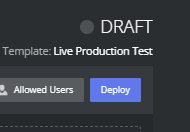
-
The operation takes 10-15 minutes.
Deleting a Space
A space that has been created and deployed incurs costs. Instances that are running are much more costly than when they are off. However there are still charges for instances that are off, especially if they have large disks.
It is therefore recommended that instances are destroyed when they are no longer in use.
Note: You must first perform a Delete all before a deployed space can be deleted.
-
Delete all: All virtual instances that Viz Now has deployed are deleted from the Cloud Account.
All configurations are lost but the space itself is not yet deleted from Viz Now database. -
Delete: The space is deleted from the Viz Now database.
To delete all content deployed in a Space
This removes all virtual machines and storage. Make sure you have saved any work elsewhere before doing this.
-
Open the space you want to delete (must be Deployed).
-
From the Three dots menu, select Delete all.
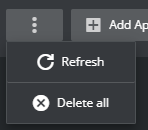
-
A popup box warns about permanent actions.
Type in the requested keywords to confirm the action.
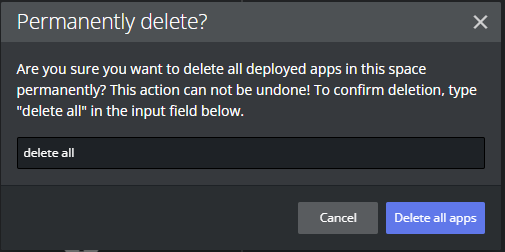
To delete a Space
-
To completely delete the Space references from Viz Now, select Delete (available if the Space is in Draft mode).
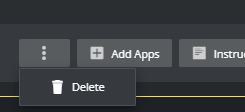
-
Confirm the deletion, in the popup
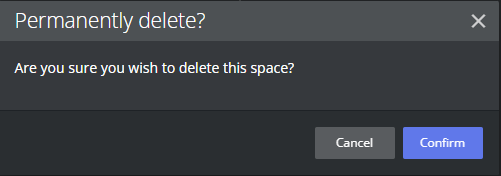
AWS Tags
For each Space, it is possible assist Space management by adding tags. The various types of tag are described below:
All tags are applied as AWS Tags on all resources deployed by Viz Now.
-
AWS Tags are key-value pairs that can be attached to AWS resources, providing a flexible way to manage, organize, and track costs.
-
AWS Tags facilitate efficient resource filtering and discovery, enhancing operational efficiency.
-
In AWS, tag policies enforce consistent tagging across resources, which is crucial for regulatory compliance and effective resource management and cost tracking.
Note: The Organization Administrator can define mandatory Tags to comply with AWS Tag Policies and ensure that specific tags are always included.
See the Viz Now Administrator Guide, section Organization.
Custom Tags
Adding custom tags to a Space enables distinguishing a particular Space from other resources. It also clarifies what the Space is used for.
To add a custom tag
-
In the required Space, click the Plus sign above the heading for the Space.

-
Enter the Tag name and click
 or press Enter.
or press Enter. -
(Optional) Provide a value if required.
-
To add the new tag, click
 .
. -
Once the Tag is added, a redeploy is required to add the Tag to any existing AWS resources.
The Tag is highlighted until this is done.

Mandatory Tags
If your administrator has marked an Organization Tag as mandatory, it will appear in all new Spaces. It is not possible to remove this tag and there is no 'X' button to remove it. However, you add values to it.
To select values for a mandatory Tag
-
Click on the required tag.
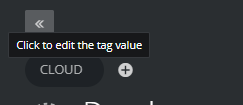
-
Enter a value and save by clicking
 or pressing Enter.
or pressing Enter.
Organization Tags
Organization tags that have been created by an Administrator, appear as selectable suggestions.
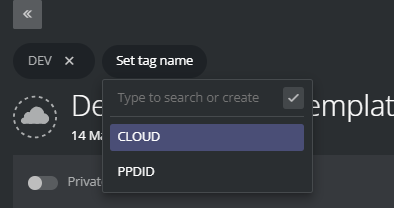
To add organization tags to a Space
-
Simply select them from the list to add.
Cost Allocation Tags
-
Cost allocation tags are labels that you or AWS assign to an AWS resource. Each tag consists of a key and a value.
-
These tags enable you to organize your resources and track costs on a detailed level.
There are two types of cost allocation tags:
AWS-generated tags: These are created by AWS or AWS Marketplace ISVs for you and are prefixed with "aws:".
User-defined tags: You can add these tags yourself through Viz Now, as described above.
Why use Cost Allocation Tags?
Accountability: Allocate costs to those responsible for the resource usage.
Financial transparency: Provide clear visibility into cash allocations toward IT spending.
Informed IT investments: Track ROI based on projects, applications, or business lines.
How Do Cost Allocation Tags Work?
-
After activating cost allocation tags, AWS organizes your resource costs on a cost allocation report.
This report groups your usage and costs based on your active tags. -
You can apply tags that represent business categories (for example, cost centers, application names) to organize costs across services.
Example Scenario:
-
You tag two Amazon EC2 instances:
-
Cost Center: Engineering
-
Stack: Production
-
-
You have an AWS-generated tag: createdBy (that tracks who created the resource)
The cost allocation report will show costs associated with these tags.
Note: Cost allocation tags enhance cloud accountability and empower better decision making.
-
Activate them to gain insights into your AWS costs.
Read more about this topic here: Using AWS cost allocation tags - AWS Billing (amazon.com)